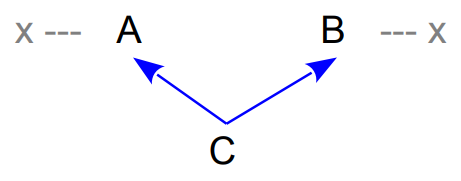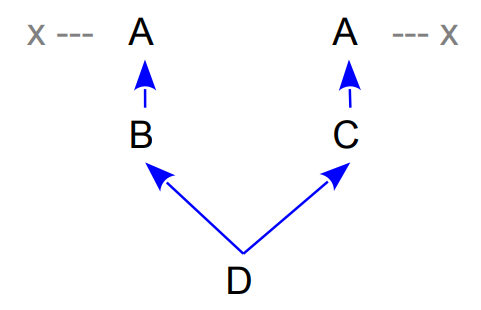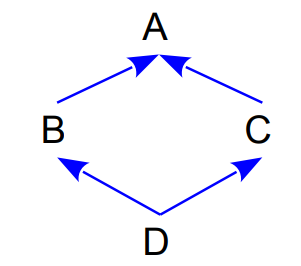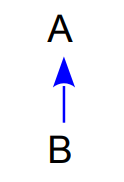PIMPL Idiom and Dynamic Polymorphism¶
PIMPL Idiom¶
C++ relies on compiler performing a lot of work
- Compilation can get pretty slow if many headers are included
- Clients may need to be recompiled whenever private/protected implementation details change in the header...
PIMPL Idiom:
- Collect implementation details in an implementation class
- Only forward declare it in the header, move its definition to the cpp file.
- In the main(interface) class have a (smart) pointer to an implementation object
- Have all the definitions of the methods, that access the implementation object, in the cpp file
timeseries_pimpl.h timeseries_pimpl.cpp
Issues¶
- Propagation of const
- A pimpl pointer that is constant, but is not a "const pointer"!
- Solution: use accessor methods everywhere instead of a direct pimpl pointer
1 2 3 4 5 6 7 | |
Inheritance in C++¶
- Multiple inheritance
- But no concept of interfaces (as in Java and C#): fully compensated by multiple inheritance and abstract classes
- Polymorphism (dynamic binding) is not automatic
- Methods should be declared virtual
- Objects should be accessed via pointers or references
- Shared or replicated base classes
- Shared base classes are called virtual base classes
- Access control to base classes
- private, protected, and public base classes
- Related to interface and implementation inheritance.
Constructors and Destructors¶
Some rules for constructors and destructors
- A subclass constructor invokes the superclass constructors – implicitly or explicitly
- Constructors with parameters must be invoked explicitly
- Default constructors can be invoked implicitly
- Bottom-up construction and top-down destruction:
- First base class constructors, then derived class constructors
- Multiple base classes are constructed in their declaration order
- C++ allows for inheritance of constructors
- Makes sense if a derived class does not add data members.
Example of constructors/destructors in a hierarchy
Polymorphism: Virtual Functions¶
- If a member is virtual, the dynamic type of the object controls which function to call – true OOP
- Destructors may also be virtual.
- Conditions for getting polymophic behavior in C++:
- A virtual member function f must be called
- The object must be accessed via a (smart) pointer or a reference:
o->f()
-
Avoiding polymorphic behavior with a virtual function f:
- Activate f with a scope resolution operation:
o->A::f()
- Activate f with a scope resolution operation:
-
std::unique_ptr<A> o = std::make_unique<B>();- A \to B
Example with virtual functions
What to remember when doing OOP with virtual functions in C++:
- The function in the base class must be virtual
- The base class function and the derived class functions must have the same name
- Their parameters must be identical
- Their constness must be the same
- Their return types must be compatible
- The object must be accessed via a pointer or a reference
- Recommendation: use (a container of) smart pointers
- For example:
std::vector<std::unique_ptr<Point>>
It is recommended to use the (contextual) keyword override to state your intension of overriding a virtual member function
- Not using override + one of the above errors = a silent overload in the derived class
Virtual Destructors¶
- A class with virtual functions should always have a virtual destructor
1 2 3 4 5 6 7 8 | |
1 2 3 4 5 6 7 8 9 10 11 12 13 14 15 | |
Abstract Classes¶
- Pure virtual functions
- Marked with
= 0
- Marked with
- A class is abstract if it has one or more pure virtual functions
- No objects can be created from an abstract class
- Used as a base class in a hierarchy
- Corresponds to interfaces in Java and C#
Multiple Inheritance¶

Concrete problem:
- If
acis an object ofC, whichxdoesac.xrefer to?
In general
- Replication: Is there one or two x pieces in C?
- There are two x variables in a C object
- Name clash: Does
xinCrefer to thexinAorxinB? Do we have means to select one or another?- Use the scope resolution operator:
A::xorB::x
- Use the scope resolution operator:
- Combination: Can
xinAandxinBbe combined to a singlexinC?- No - but some control is possible via virtual bases
Replicated Base Class¶

- There are two copies of A!
- If
dis an object ofD,d.xis ambiguous- But there are
d.B::xandd.C::x
- But there are
Virtual Base Classes¶

- It is also possible to share a base (usual case)
- The constructor of A is called only once
1 2 3 4 5 6 | |
Member Access Control¶
public,private, andprotected- Similar to other object-oriented programming languages
- Access control is applied uniformly to names:
- Functions
- Variables
- Types
- and others
- Access control via private/public/protected can be augmented with use of friends
Base-class Access Control¶
- A base class can be defined either public, private, or protected.
- Idea: restrict access to inherited members (with private and protected base classes)
- When is more restricted access control to base classes useful?
Ais used internally inBandAshould not affect the interface ofBBis implemented in terms ofABis not anA

Rules
class B: private A- Public and protected members in A become private in B
- The default case for classes!
class B: protected A- Public members in A become protected in B
class B: public A- Public members in A will also be public in B
- The "normal" case - but not the default.
- Default for structs!
- Only in this case implicit up-casting works:
1 2 | |
Interface/implementation Inheritance¶
Multiple inheritance and the inheritance access modifiers are useful when inheritance is used for different purposes:
- Inheriting implementation details, which we may want to hide (private)
- Possibly hide just from the outside, but not from the derived classes (protected)
- Another option is to aggregate implementation details (PIMPL idiom)
- Implementing an interface, by inheriting from an (abstract) class (public).
- Derived class “is a” Base class
Navigating the Hierarchy¶
- Given a pointer to a base class you want to check if this is a pointer to an instance of some derived class
dynamic_cast<T*>(a)- Returns a pointer of type
T*ifapoints to an object of typeTor a type derived fromT. Otherwise returnsnullptr
- Returns a pointer of type
dynamic_cast<T&>(a)- Analogous, but throws exception if not successful.
- Example
- Can also be used to navigate to siblings in the hierarchy:
class ElectricGuitar: public MusicInstrument, public ElectronicDevice- Then, for each member of a vector of
MusicInstruments, try to see which can be casted toElectronicDevice
Smart Pointers and Hierarchy¶
- Downcasting:
- Obviously, it is not possible to created a downcasted copy of
unique_ptr
- Obviously, it is not possible to created a downcasted copy of
1 2 3 4 5 6 7 8 9 10 | |
- Advice: use
unique_ptras much as possible as well as passing by reference.
Last update:
June 14, 2021